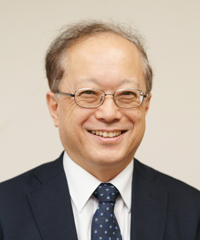In a previous blog, I pointed out that as the vague term "bumpy development" spreads, there is the possibility that it will promote further public confusion regarding developmental disorders.
However, new terms have recently appeared and are receiving attention in news on the web. One of these is "pseudo-developmental disorder." Interpreted literally, "pseudo" refers to something that appears similar but is totally different. Pseudo-developmental disorders resemble developmental disorders, but they indicate a condition that is not a developmental disorder.
As I emphasized in a previous blog entry, the disorders that comprise developmental disorders are autism spectrum disorder (ASD), Attention-Deficit/Hyperactivity Disorder (ADHD), and learning disability (LD), all of which have clearly defined diagnostic standards that are recognized worldwide. Nevertheless, that does not mean that the standards are perfect, so they are revised periodically, and an effort is made to improve the applied standards.
When a physician sees a child patient who may have ASD or ADHD, the physician makes the diagnosis based on the child's behavior and activity comparing it with the diagnostic standards. At present, the Diagnostic and Statistical Manual of Mental Disorders (DSM-5) currently used worldwide lists characteristic behavior associated with such disorders.*1 If several (the required number differs according to the disorder) on the list correspond, a diagnosis will be made.
Physicians do not make diagnoses based on individual judgment. By making diagnoses based on clearly documented diagnostic standards, it becomes possible to make objective comparisons of information and data collected from around the world on the effectiveness of medical treatments, for example.
However, there are cases in which the symptoms are not adequately evident to make a diagnosis. For example, in the Diagnostic and Statistical Manual of Mental Disorders, 5th edition (DSM-5), ADHD refers to nine inattention symptoms and nine hyperactive-impulsive symptoms, and the patient is diagnosed as having ADHD when six or more of the nine symptoms in each category are identified. A diagnosis will not be made if there are five or fewer symptoms. The principles of this method of diagnosis are the same as those used in the autism spectrum disorder and learning disorders.
Of course, even children who do not meet the diagnostic standards experience various difficulties due to behavioral characteristics. Some children experience difficulties at home, at childcare facilities, or at school due to their symptoms such as difficulty in sustaining attention, frequent forgetfulness, difficulty in organizing things, and difficulty in controlling impulsive behavior. As a physician, I can understand the uncomfortable feeling of simply telling them that they do not have ADHD and ruling out or ending treatment because the diagnostic standards are not met, and ending up telling the parents that the child has a pseudo-developmental disorder, or they are in the "gray zone" to convince the parents. It is hard to report that there are no developmental problems when they have come to seek a diagnosis precisely because the child has behavioral problems.
However, the words like "pseudo developmental disorder" and "gray zone" that were coined out of such consideration will be understood by the ordinary citizen to be one type of diagnostic name, and that doctors and other specialists agreed and defined the terms. And as might be expected, they will consequently believe that treatment and care for such conditions exist.
However, there are neither definitions that have been agreed upon and accepted nor criteria, and furthermore, no clear policy regarding the best way to respond and handle the conditions. Regarding disorders that meet diagnosis standards like DSM-5, based on their common standards, there is evidence regarding the effectiveness of treatments and methods of care. Yet because "pseudo-developmental disorders" and the "gray zone" are not clearly defined, there is no evidence regarding effective methods to deal with these conditions.
At the very least, when providing information to society at large, it is very important that physicians and researchers use terms that are clearly defined (defined diagnosis). When unclear pseudo-diagnosis without definitions is used, it will only lead to more confusion in society.
Reference
- *1 American Psychiatric Association. (2013). Diagnostic and Statistical Manual of Mental Disorders. text revision DSM-5 (5th ed.). Translated by Saburo Takahashi and Yutaka Ono as supervisors; Toshiyuki Someya, Shigenobu Kanba, Norio Ozaki, Masaru Mimura, and Toshiya Murai as translators, as Seishinshougai no shindan oyobi toukei manyuaru [Diagnostic and Statistical Manual of Mental Disorders] (Tokyo: Igaku Shoin, 2014).



 Yoichi Sakakihara
Yoichi Sakakihara










